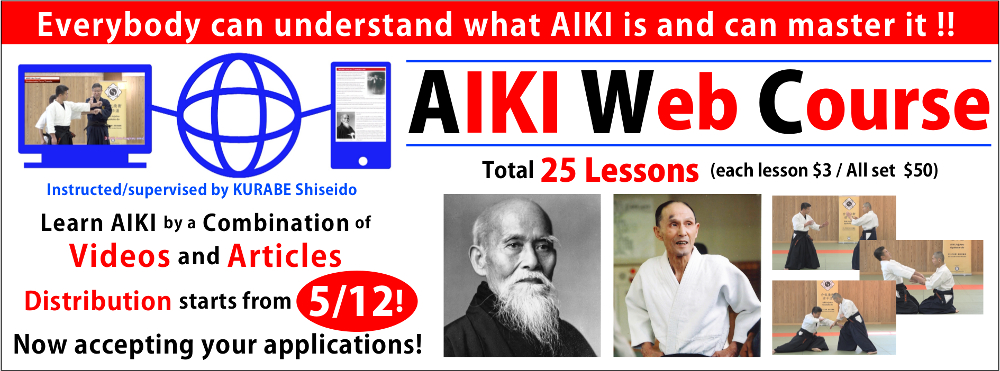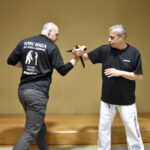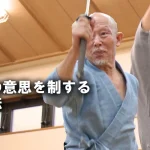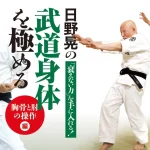KATA is the most fundamental and basic material to train almost all the Japanese BUJUTSU.It is the essence of the know-how of techniques which has been established for several generations or even centuries by many of the masters. From a beginner to an expert, they always train the techniques by repeating KATA which might seem strange for the people without expertise of BUJUTSU because such different level of people can use the same material to practice BUJUTSU. It is the secret of KATA. KATA is, on purpose, settled up with 80% completion. It is necessary to supple the rest 20% to make KATA really practical and useful for the actual situation. Please refer to the fig-1.
For a beginner it is enough just repeat the basic KATA movement without thinking till he/she can repeat the consequence fluently and smoothly. Anyhow it still requires a certain time like a year or two to complete this 1st step.

fig-1
Then as a next step, the person starts realizing the fact that each KATA itself is not quite sufficient or practical enough for the actual situation. Accordingly he/she starts to think over how he/she can supple it. One though over Option-1 to make the KATA practical like fig-2.

fig-2
After a while he/she can suddenly notice that it is only one case of the many which he/she found out. Because there are several other cases for which Opt-1 is not applicable. And he/she starts discovering several other options like fig-3 and 4. After all he/she can make KATA as 100% useful with the various options which he/she found out. This is the last stage and only an expert can reach.

fig-3

fig-4
In case somebody who found out only one option convinced that he/she could discover the very important key to make KATA 100% complete which the former people who practiced it could not found, in this way he/she believes. Accordingly he/she fixes the KATA with his/her discovery supplement as fig-5. This case often happens for the people who can’t think the essence of wisdom piled up for several generations of former masters and can’t notice the background of KATA practice.
This person starts teaching his/her student by his/her own developed KATA and accordingly a lot of the possibility of the KATA is lost at that moment.Such KATA can’t be used anymore so widely as a beginner to an expert because it can’t carry a deep meaning. I even find that such short thinking person started claiming he/she has created new system and establish own school (Ryuha) by naming themselves as SOUKE, which I saw too many all over the world.

fig-5
Example-1: RE-9 USHIRO RYOTE KOTE SEME RENKO
Normal sequence as below

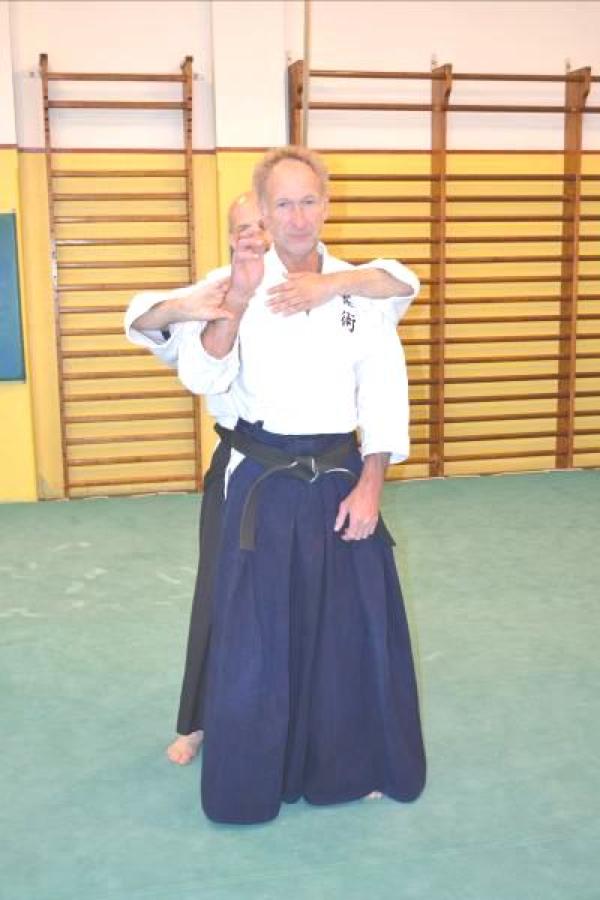
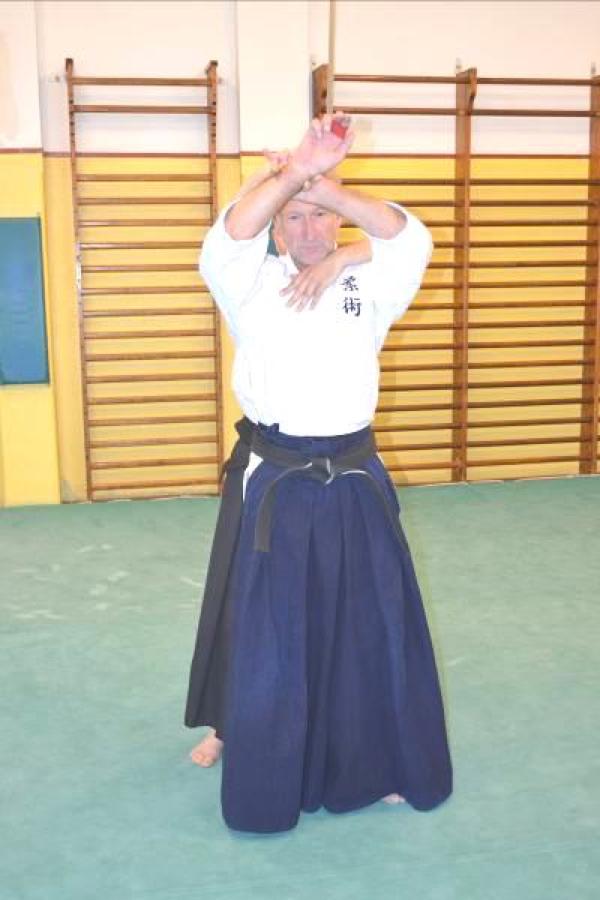
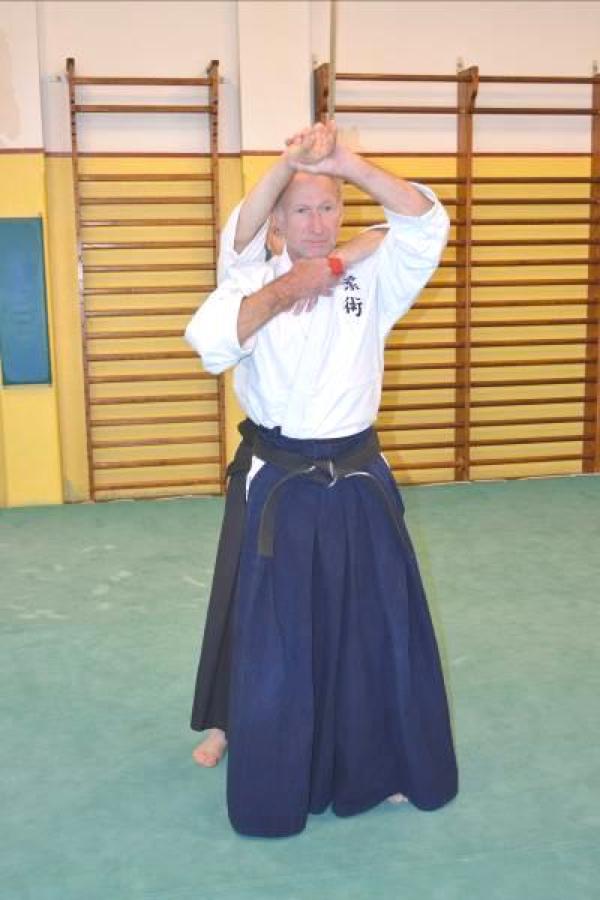
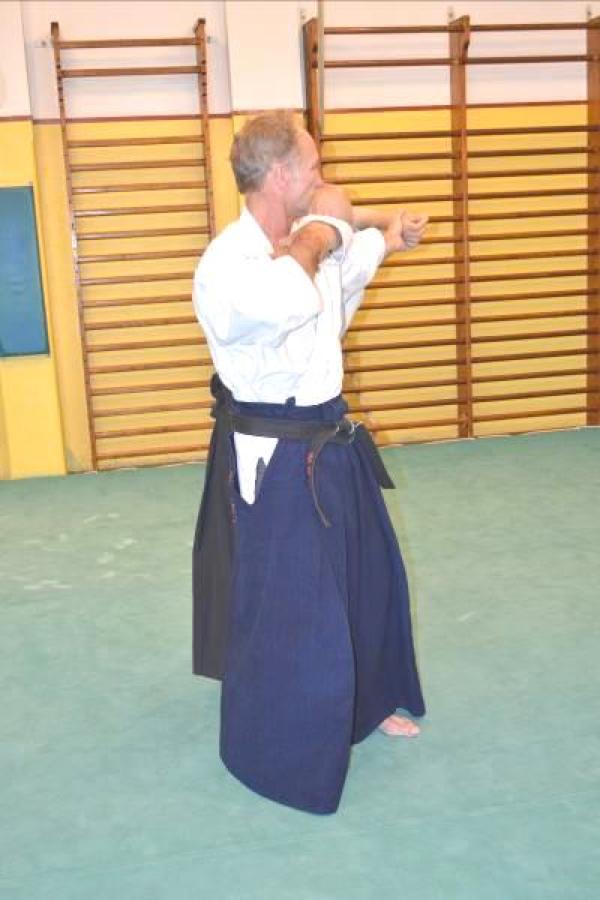
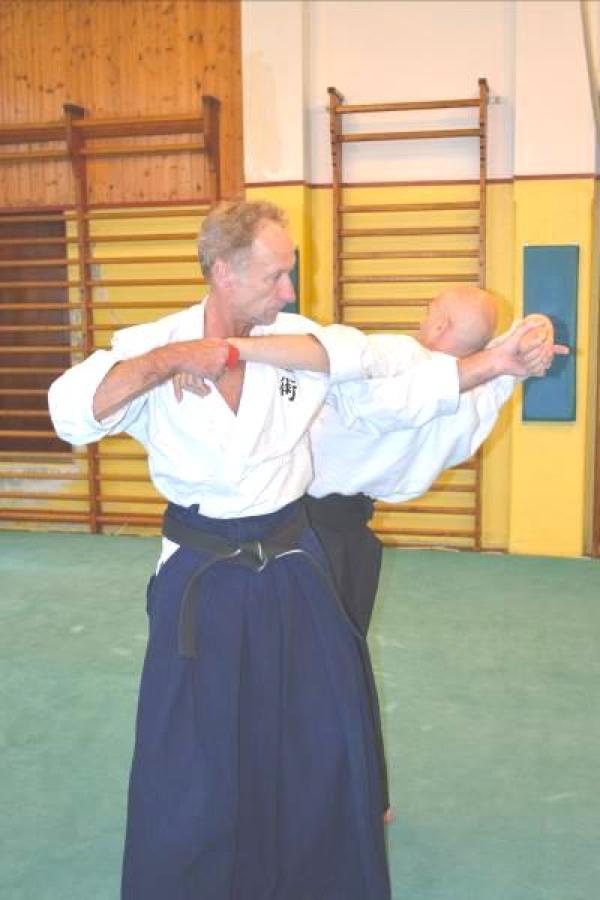
One application which my student thought as practical to guard his throat by choking


Block A’s left arm by D’s left hand. But if A seriously pulls his left arm so hard, D can’t move up his right arm because of the power conflict with his left hand/arm.
Best option: Turn head right or left with slightly knee down and the same moment raise up grasped right hand is the best option to avoid being choked. But if this is fixed as KATA, several other important possibilities shall be lost.
Turn head immediately to right and down knees:
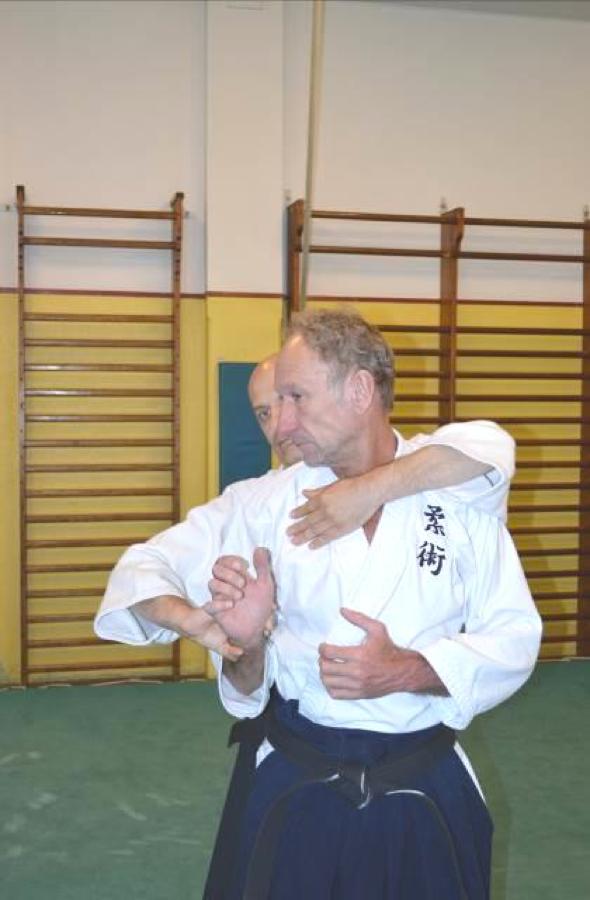
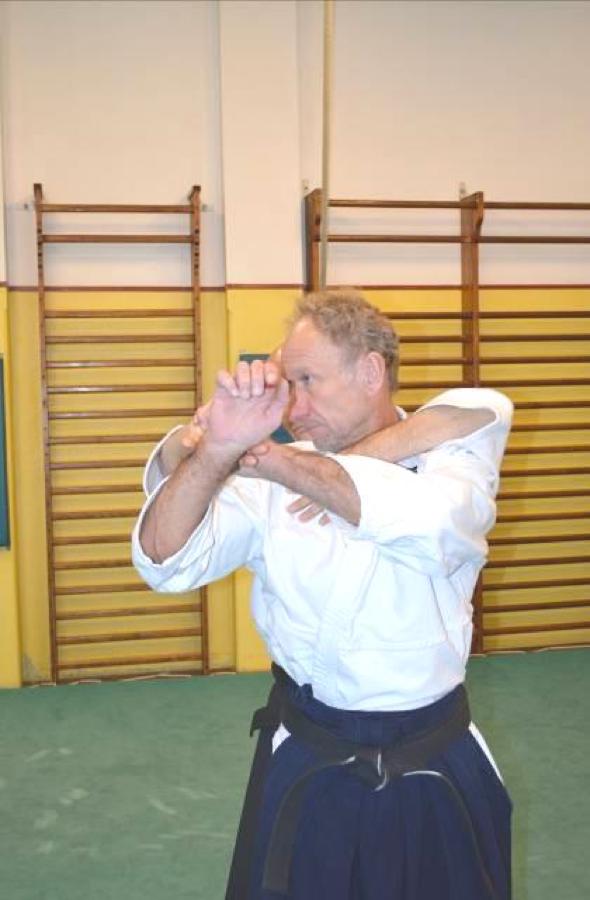
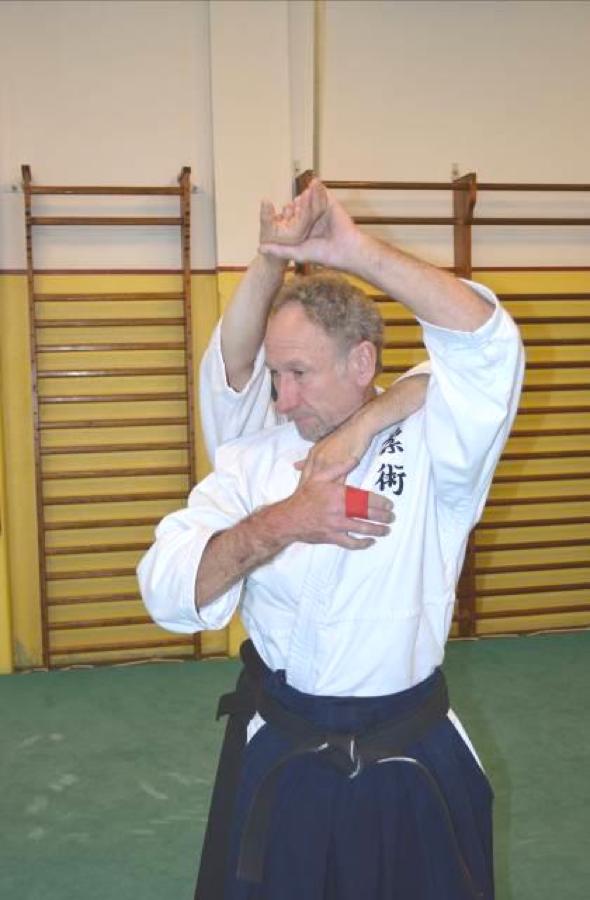

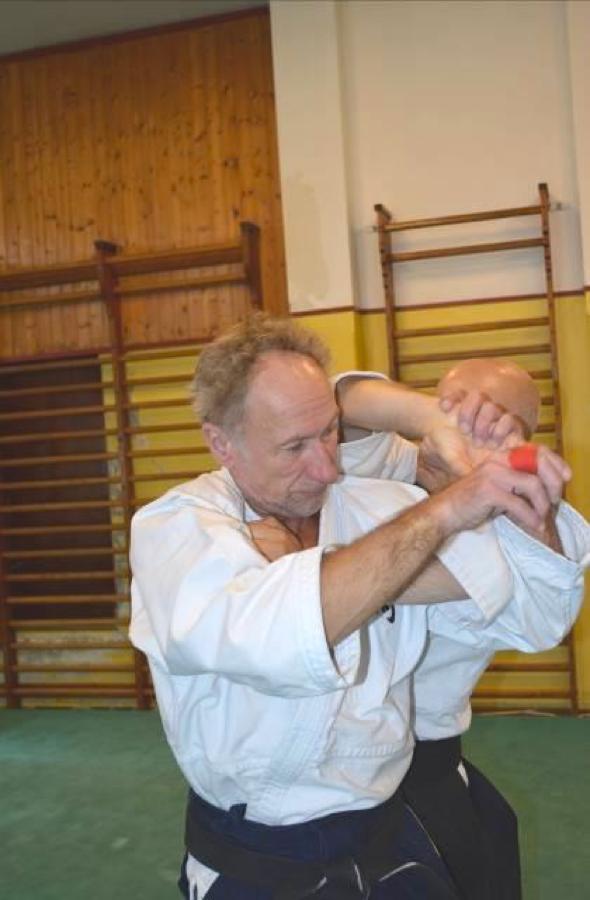
There is another tendency which a beginner often makes mistake during KATA training. Because of the same not deep thinking way as described above, one can often convince that he/she could improve KATA by changing its part.
As described above, KATA is an essence of several generations’ wisdom, it is itself perfect. There is no space to improve. If somebody thinks he/she improved by changing it is no doubt worsening. In such case KATA meaning became so small as illustrated in fig-6.
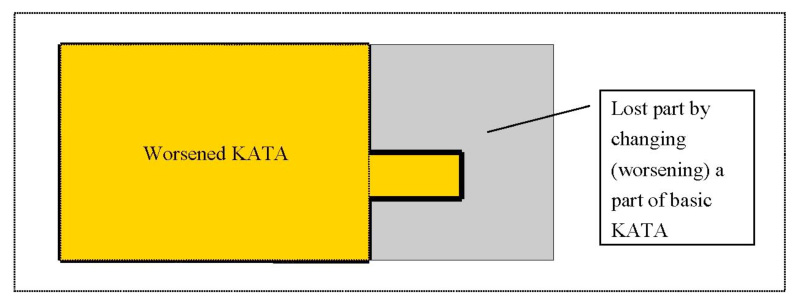
fig-6
Example 2: NU-8 BUKKOTSU SEME NUKIMI
Here is shown a wrong example. Instead of making Y-Block but use open fingers which one of my student thought much easier and practical, shall not work against a person who has a thick neck. Most probably such kind of person is strong and dangerous to fight against. So, this is not improvement but worsening.
Correct shape
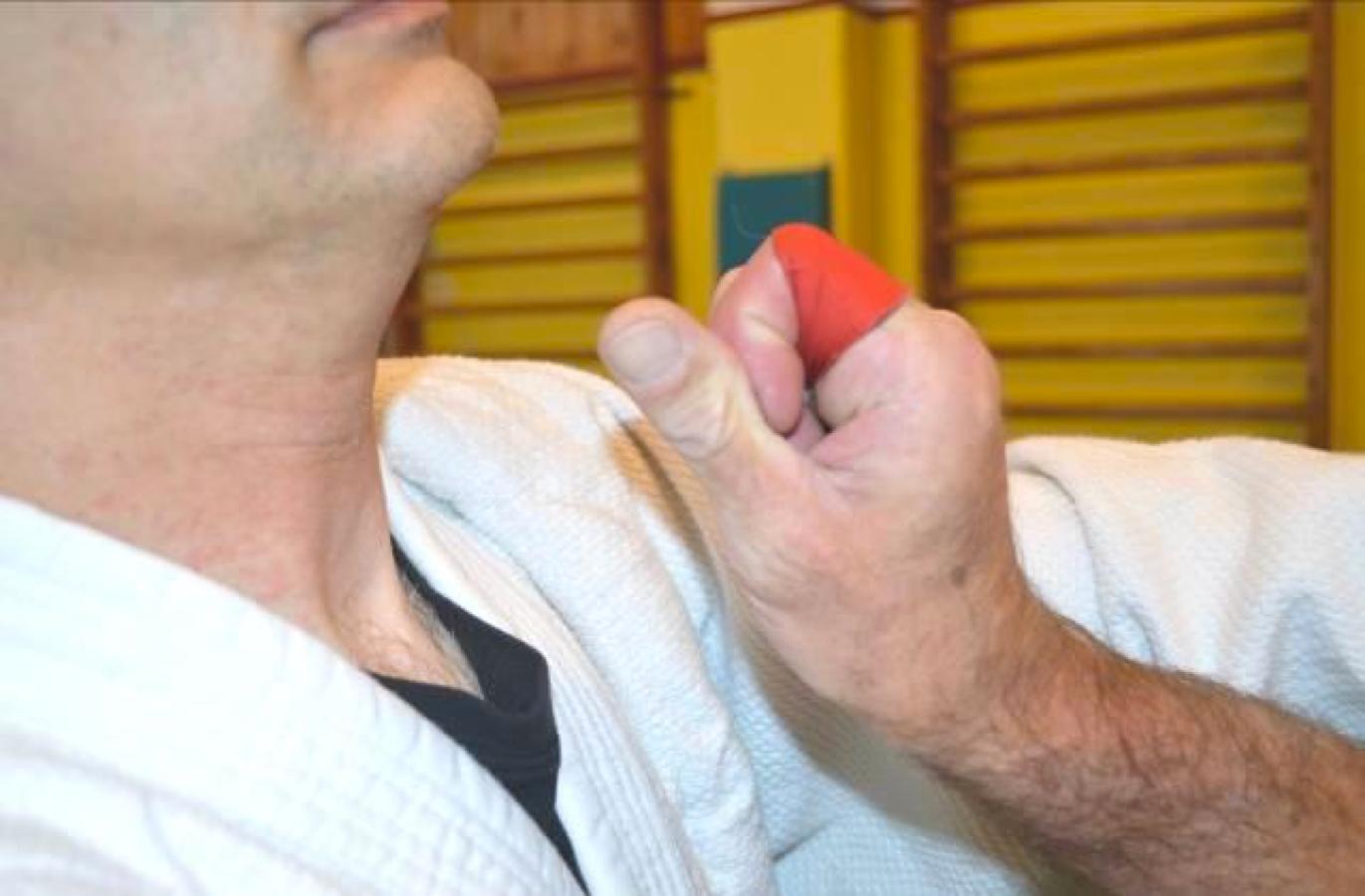
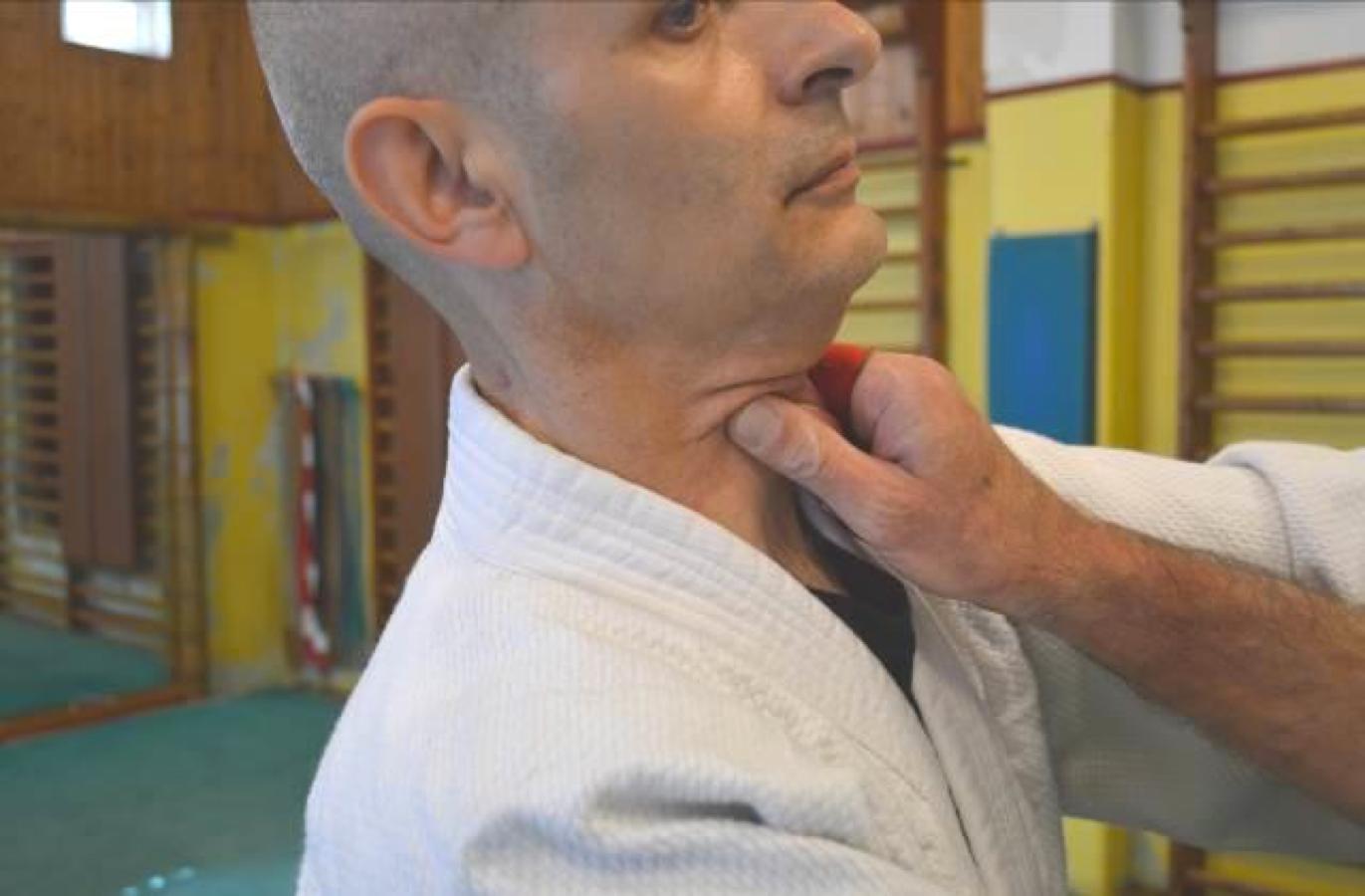


Wrong shape which might not work for a person with thick neck
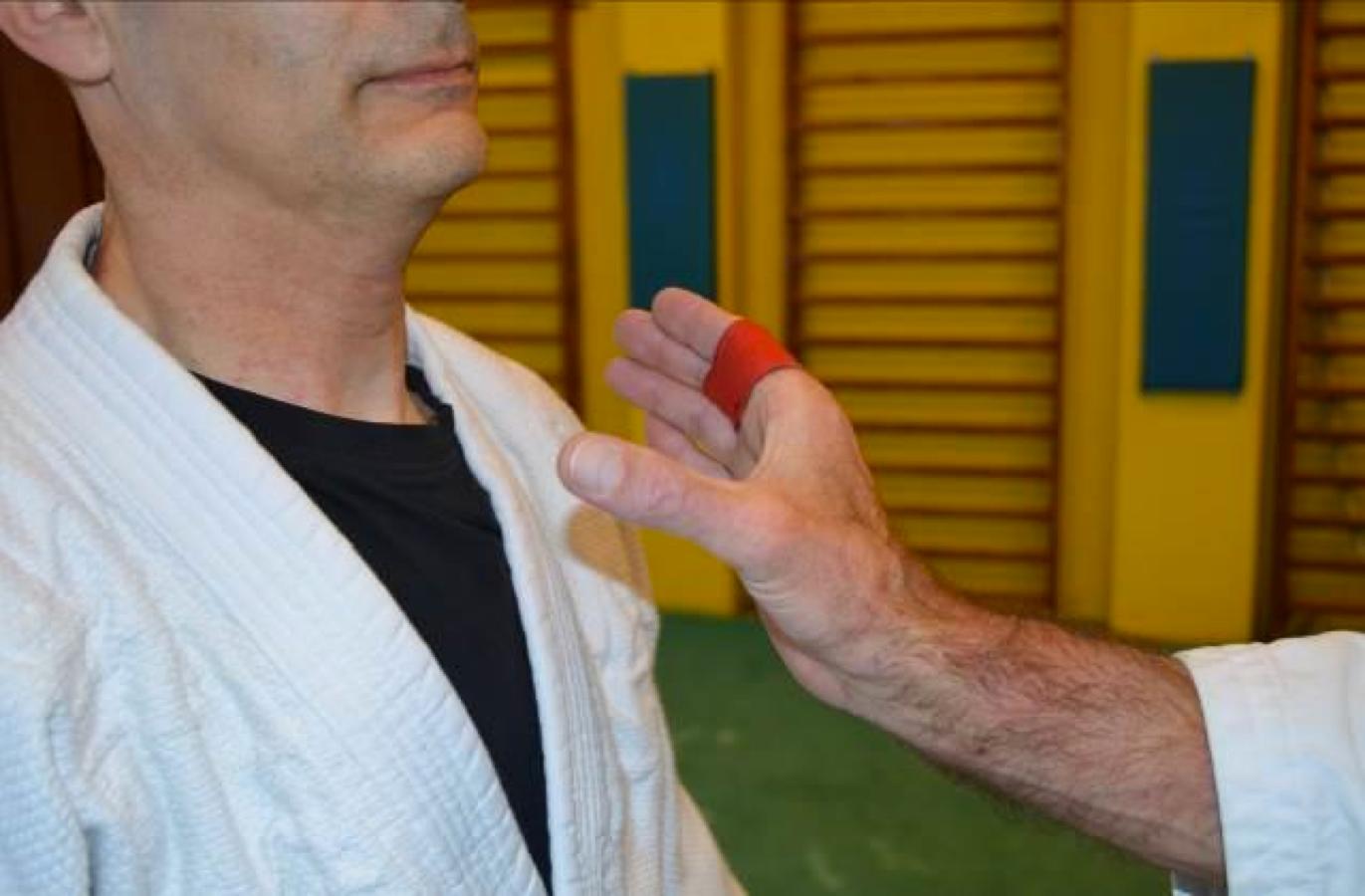
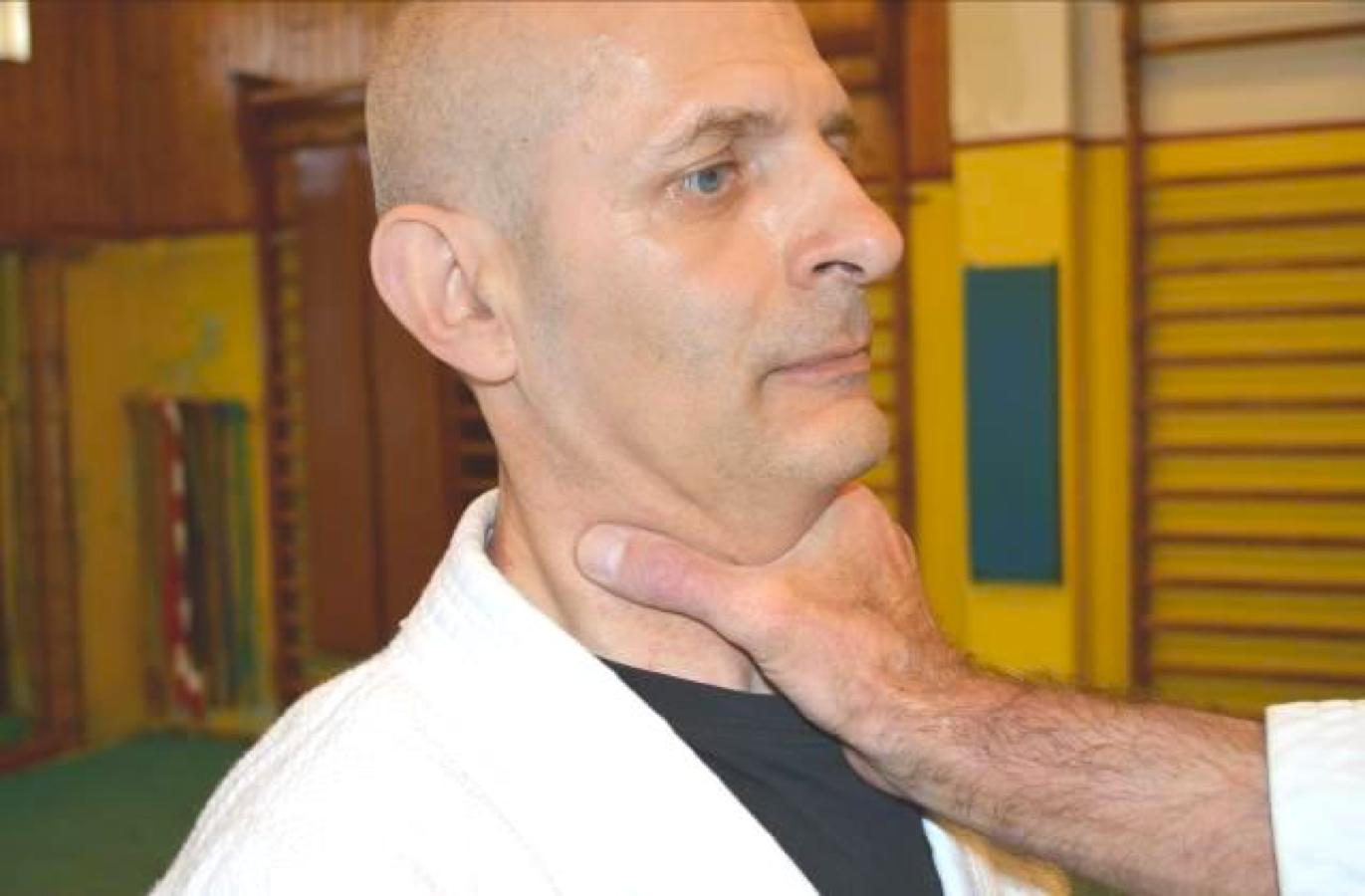


At the end of this article, I would like to express my thanks to Mr. Andrew Bryant 2nd Dan Gyakutedo, my Jujutsu student in the U.S.A., for his big effort to have corrected my Japanese English to formal English.
Makoto KURABE – SHISEIDO
representative of
AIKI JUJUTSU GYAKUTE-DO
website: www.gyakutedo.org/wp
mail: apply@gyakutedo.org
Text by Kurabe Makoto Shiseido
Born in 1950. When he was in his 30s, he began learning Gyakute-do Jujutsu, which was derived from Hakkoryu Jujutsu in the 1970s. Just before reaching the age of 40, he moved from Japan to The Netherlands and continued to master and develop Gyakute-do. In October of 2013, after adding the system of Aiki-Jutsu that he developed himself, he transformed Gyakute-do into Aiki-Jujutsu Gyakute-do, and became 2nd Soushi, grand master, of Gyakute-do. After retirement, he left The Netherlands and began promoting Aiki-Jujutsu Gyakute-do both in Japan and in Poland as his main pursuit. He is also teaching his Gyakute-do to Budo fan in the world via corresponding course.
At the starting of AIKI Web Course
Cooperating with BAB Japan Co., Ltd., hereby I start AIKI Web Course in order to realize my long-standing desire to let as many as martial arts fans all over the world have the correct knowledge of AIKI and learn how to practice AIKI.
This course consists of
Part 1 as introductory articles, I explain a wide range of knowledge about what AIKI is, which contains 6 lessons.
Part 2 as main articles, for beginners/intermediate level, I explain how to practice AIKI to master. It contains 24 lessons.
The each lessons will be uploaded on BudoJapan website one by one every week.
I hope as many people as possible will be interested in AIKI and become able to practice it by following this course.
AIKI Web Course 25 Lessons
-
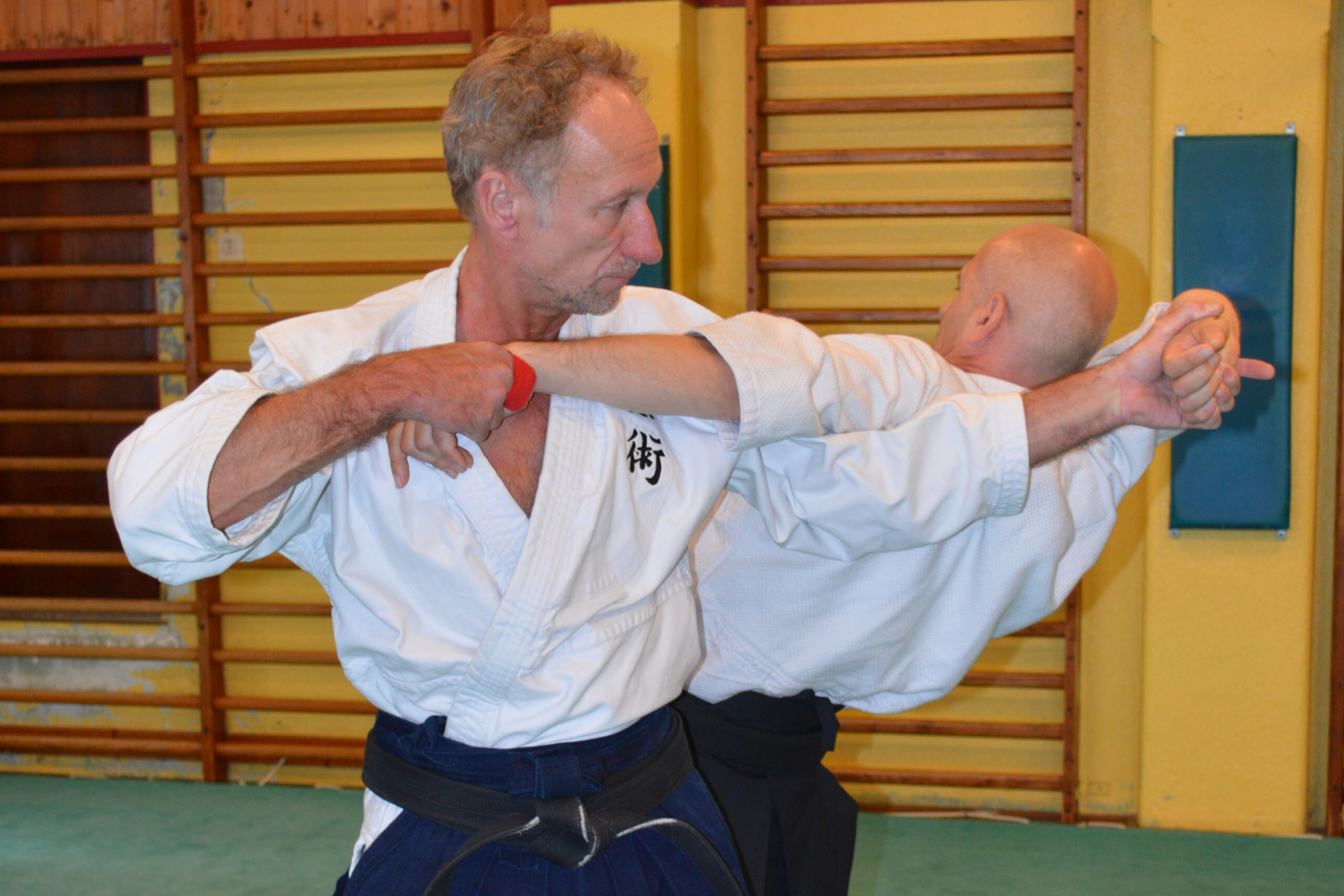
【AIKI JUJUTSU GYAKUTE-DO Series No.5】How you can learn Jujutsu properly
-
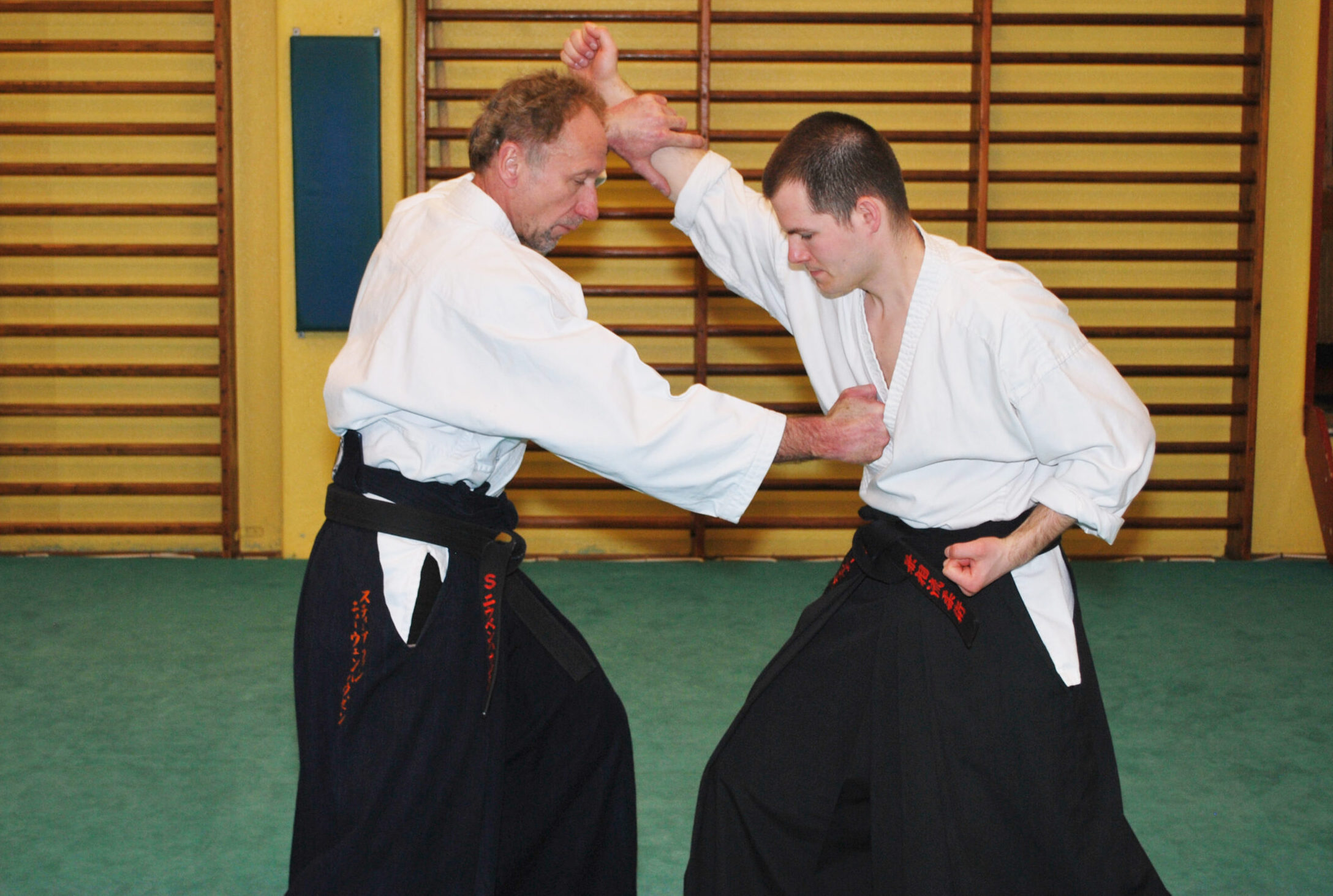
【AIKI JUJUTSU GYAKUTE-DO Series No.4】DAKEN-HO Hit and Kick KATA and AIKI
-
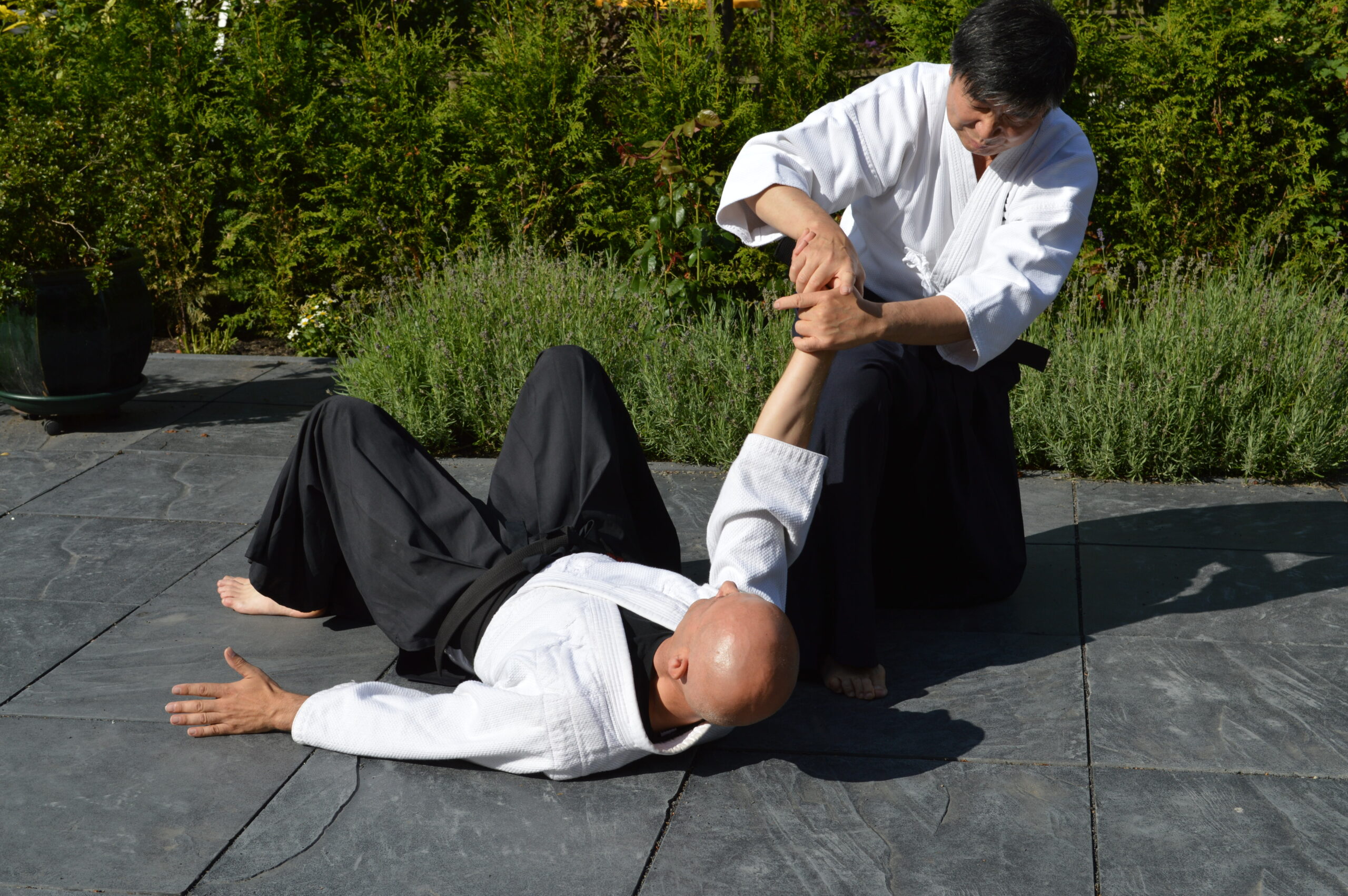
【AIKI JUJUTSU GYAKUTE-DO Series No.3】JUJUTSU WAZA, digest of FUDO
-
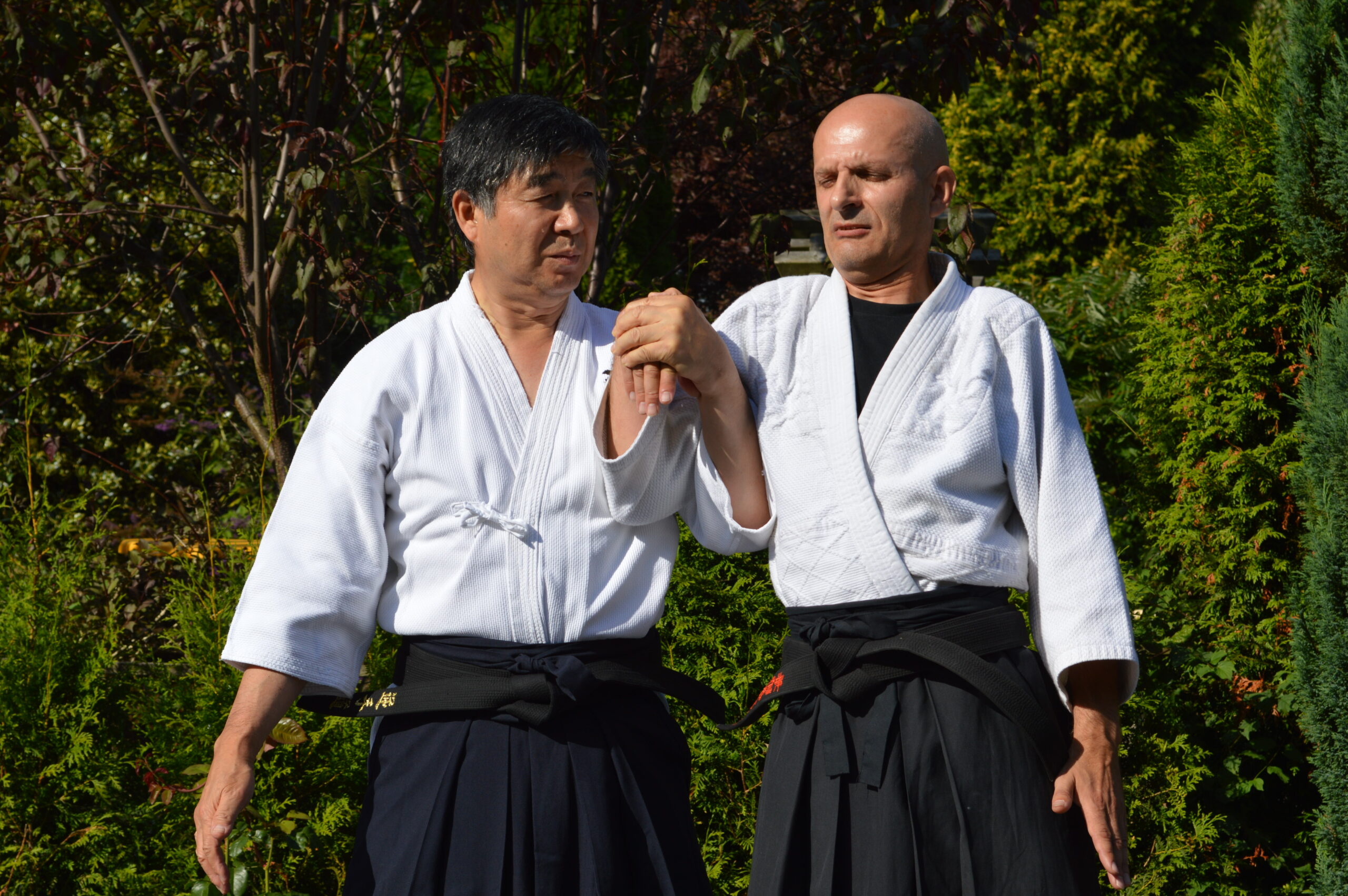
【AIKI JUJUTSU GYAKUTE-DO Series No.2】JUJUTSU WAZA, digest of NUKI, RENKO and NAGE
-

【AIKI JUJUTSU GYAKUTE-DO Series No.1】About GYAKUTE-DO and the digest of its basic techniques
-
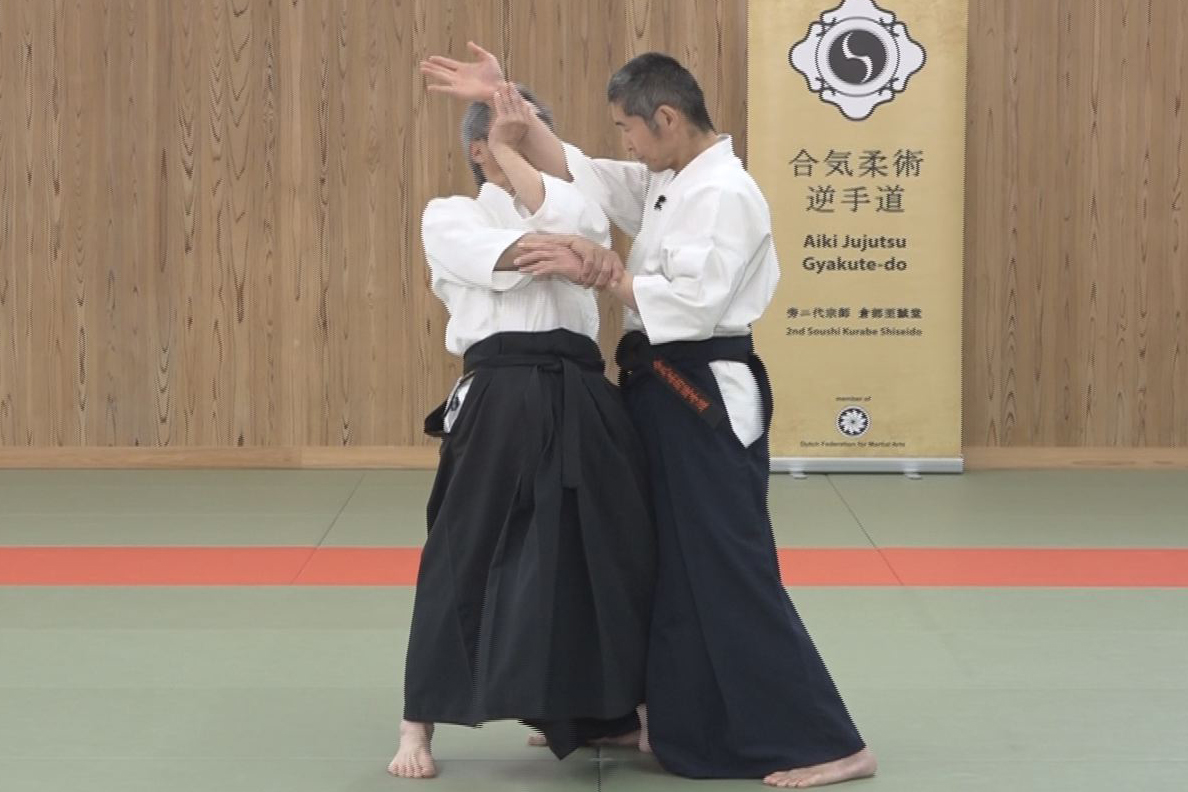
【AIKI Web Course Part 2】Lesson 24 With Comb. of Different Methods #2
-
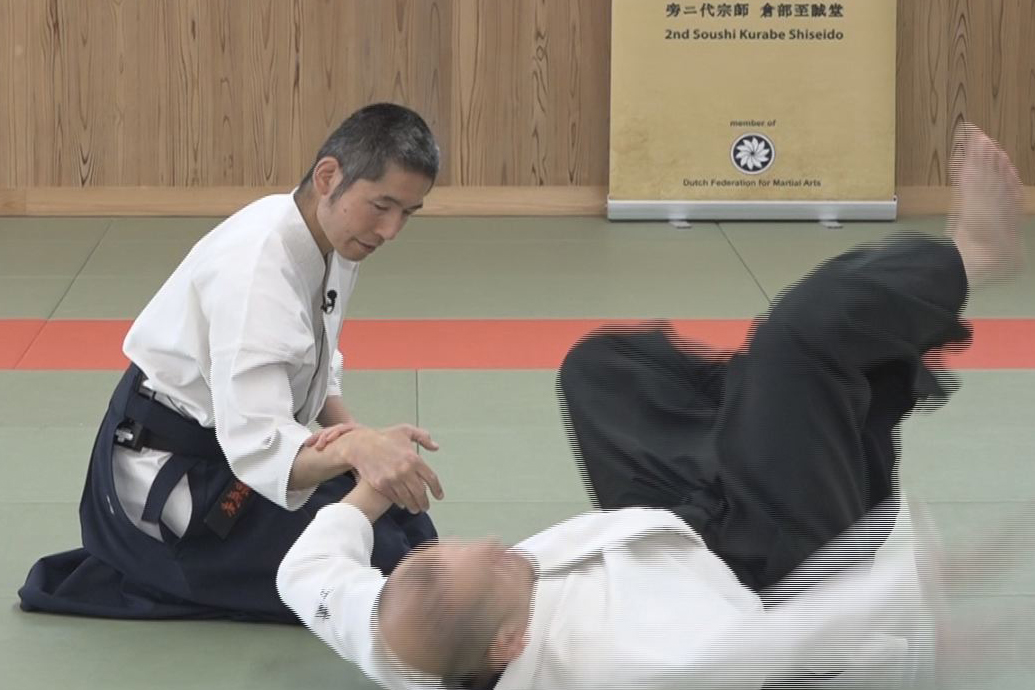
【AIKI Web Course Part 2】Lesson 23 With Comb. of Different Methods #1
-

【AIKI Web Course Part 2】Lesson 22 Advanced Tech. using F. E. method #2
-

【AIKI Web Course Part 2】Lesson 21 Advanced Tech. using F. E. method #1
-

【AIKI Web Course Part 2】Lesson 20 Advanced tech. using T. F. T. #2
-
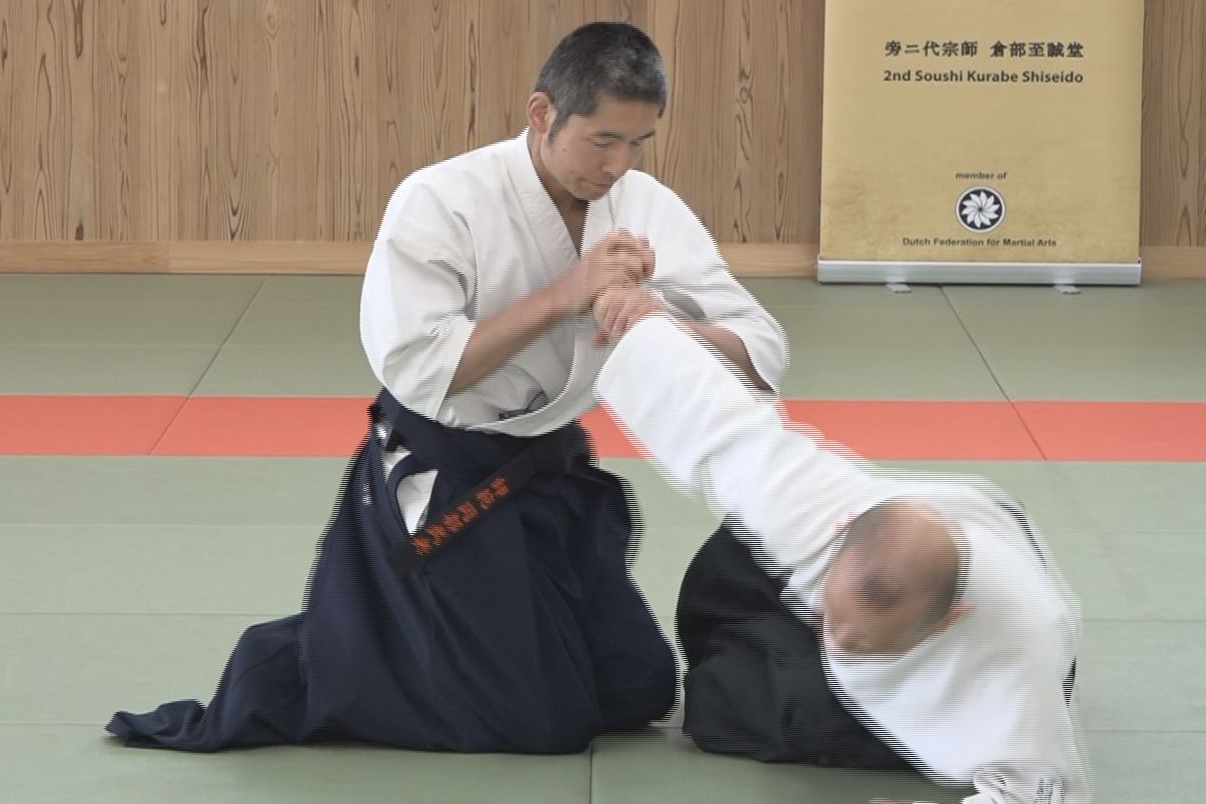
【AIKI Web Course Part 2】Lesson 19 Advanced tech. using T. F. T. #1
-
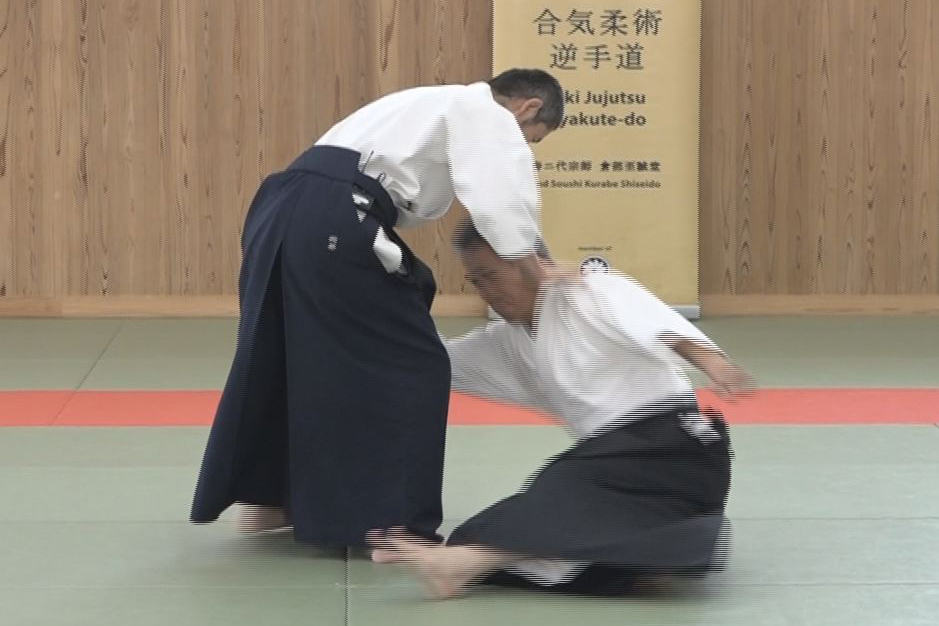
【AIKI Web Course Part 2】Lesson 18 Advanced tech. using AIKI Contact #2
-
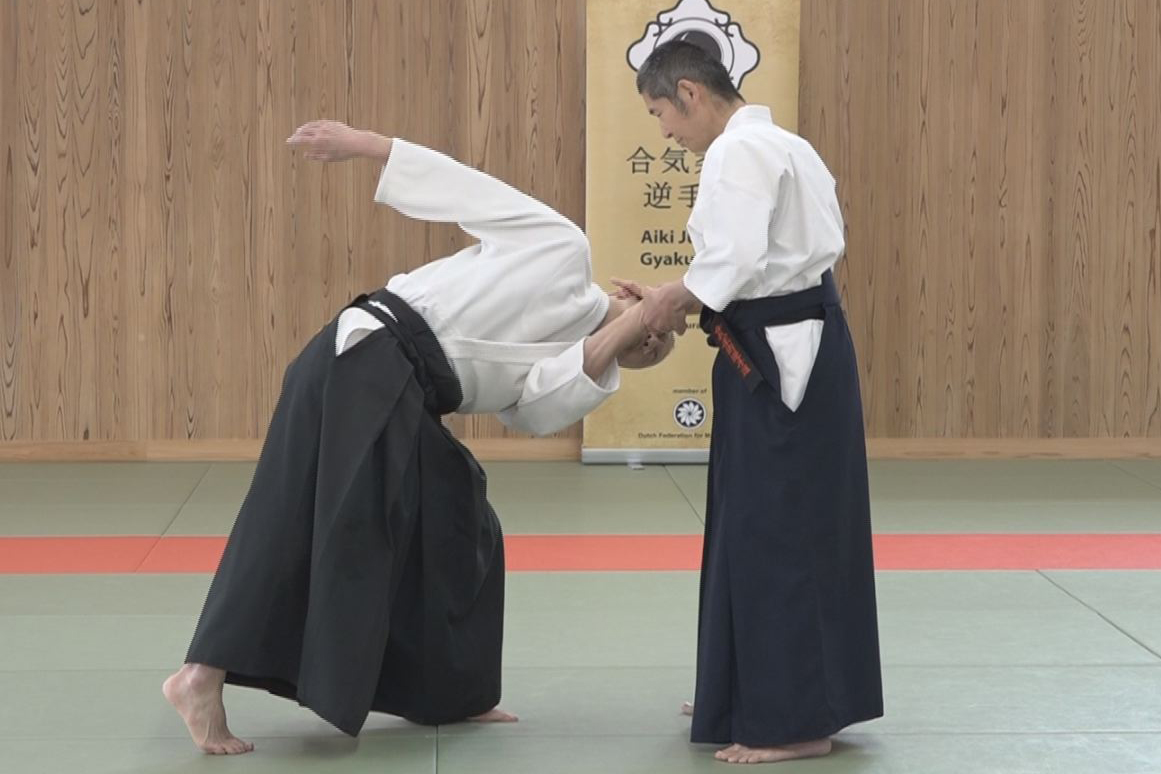
【AIKI Web Course Part 2】Lesson 17 Advanced tech. using AIKI Contact #1
-
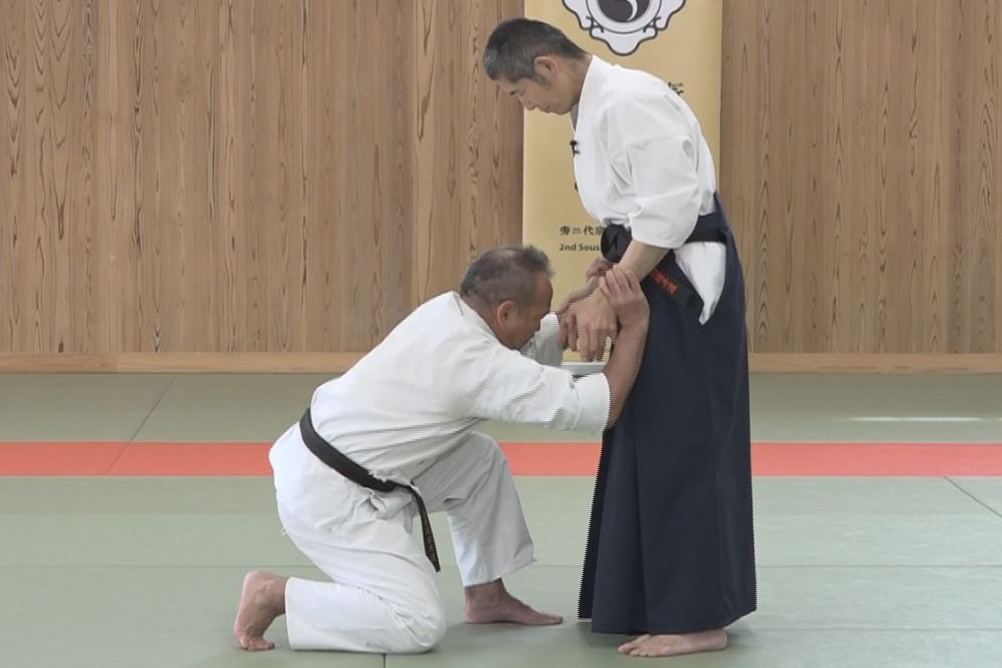
【AIKI Web Course Part 2】Lesson 16 Advanced tech. by Undetectable F.T. #2
-
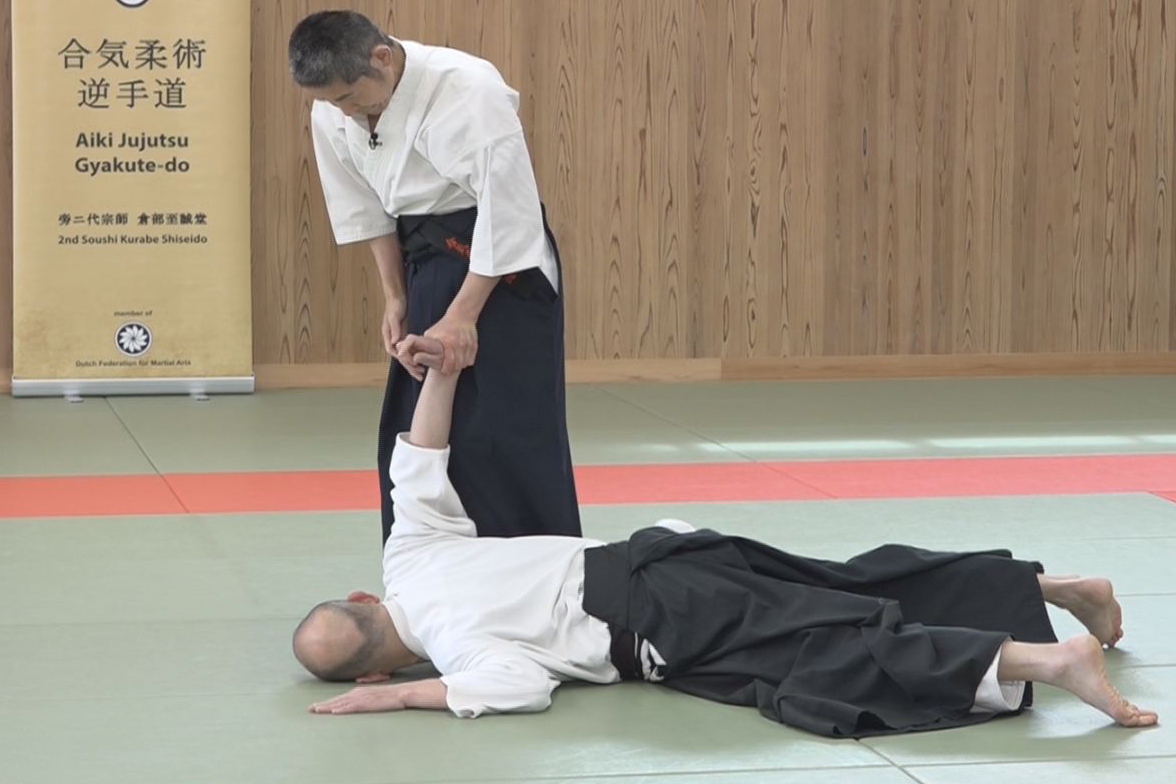
【AIKI Web Course Part 2】Lesson 15 – Advanced tech. by Undetectable F. T. #1
-

【AIKI Web Course Part 2】Lesson 14 – Advanced tech. by the Waving method #2
-
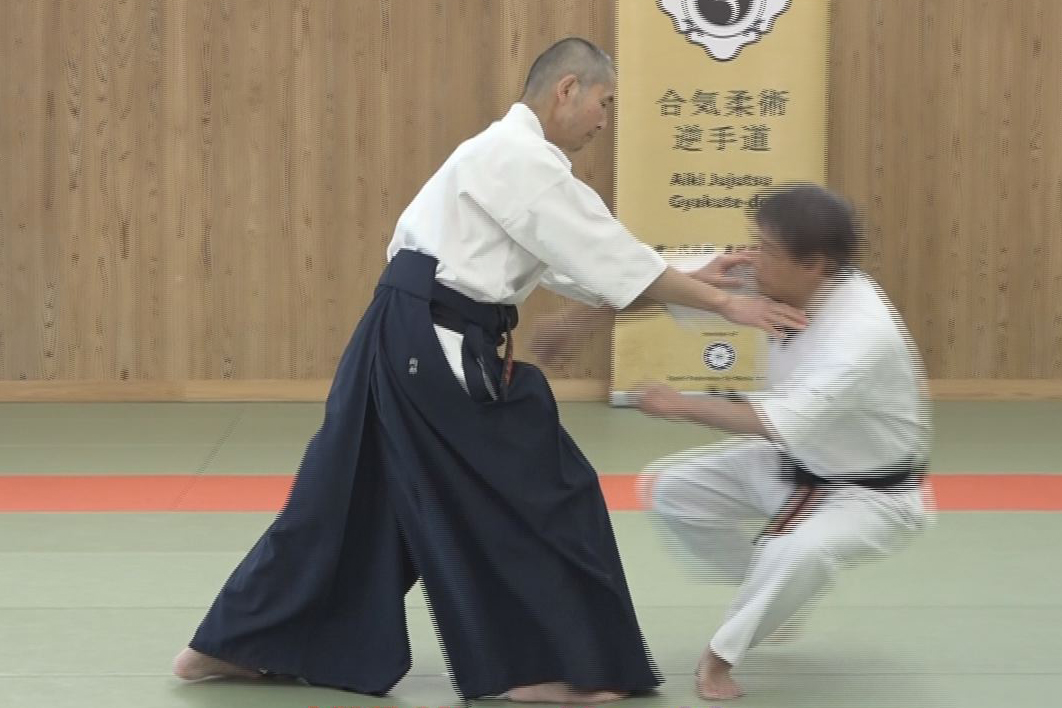
【AIKI Web Course Part 2】Lesson 13 – Advanced tech. by the Waving method #1
-
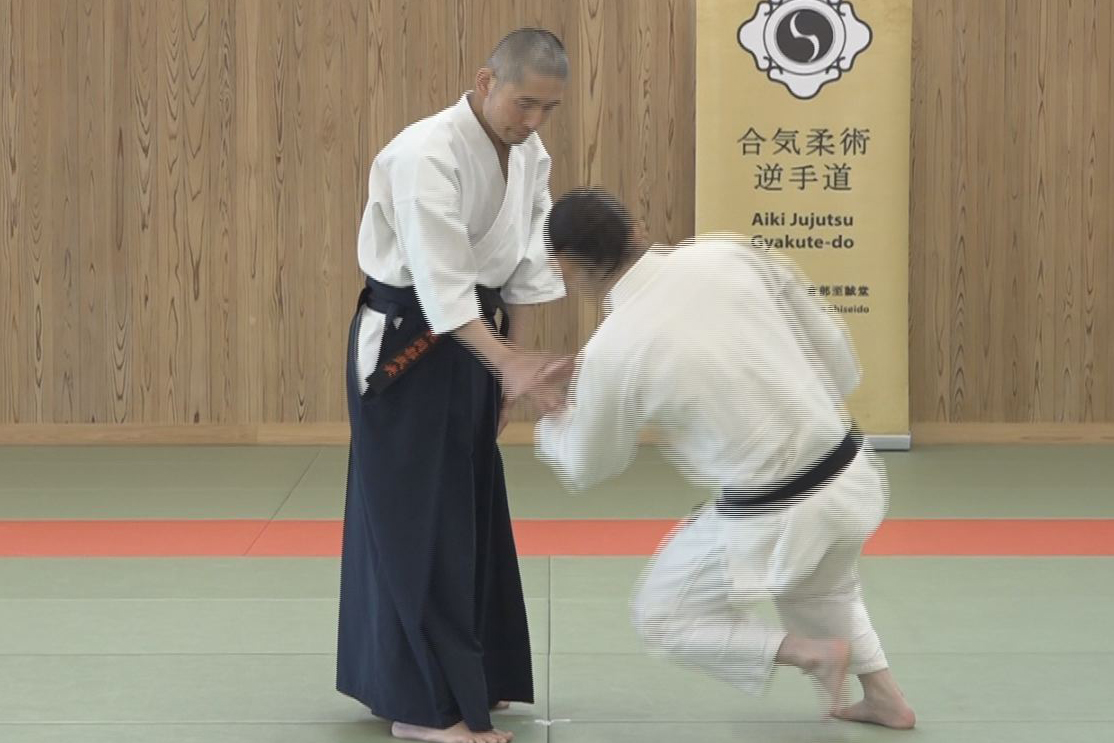
【AIKI Web Course Part 2】Lesson 12 – Gyaku-te by not Using Force nor AIKI
-
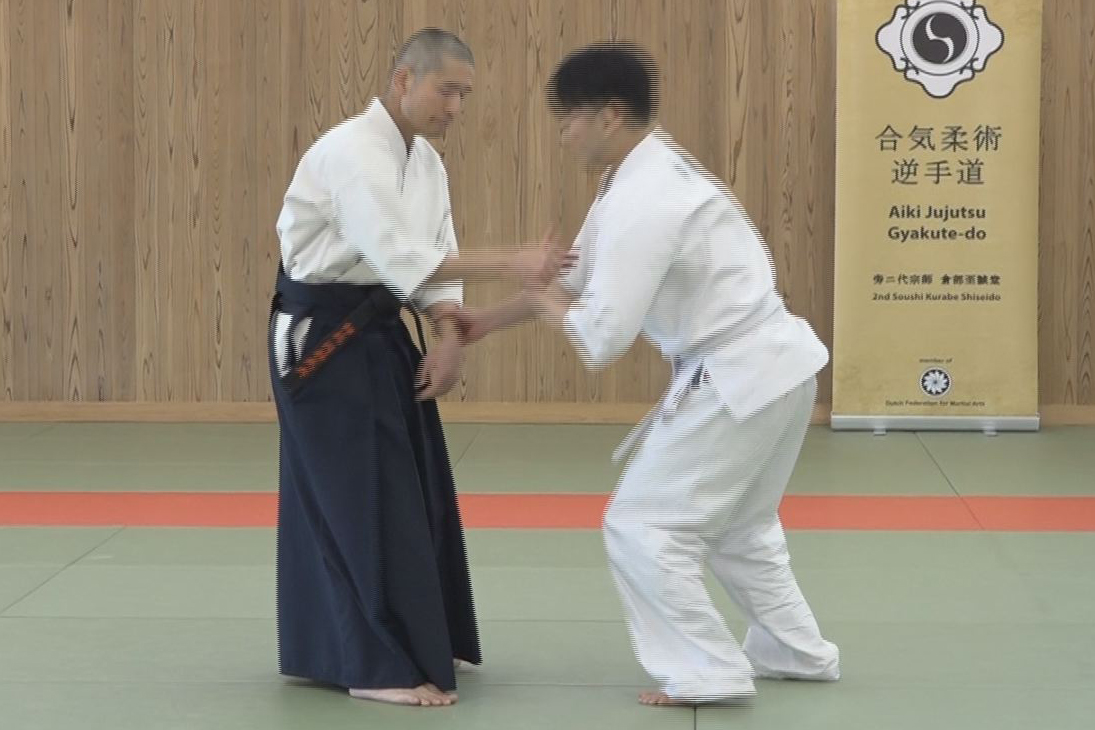
【AIKI Web Course Part 2】Lesson 11 – Gyaku-te Realized by the AIKI Method
-
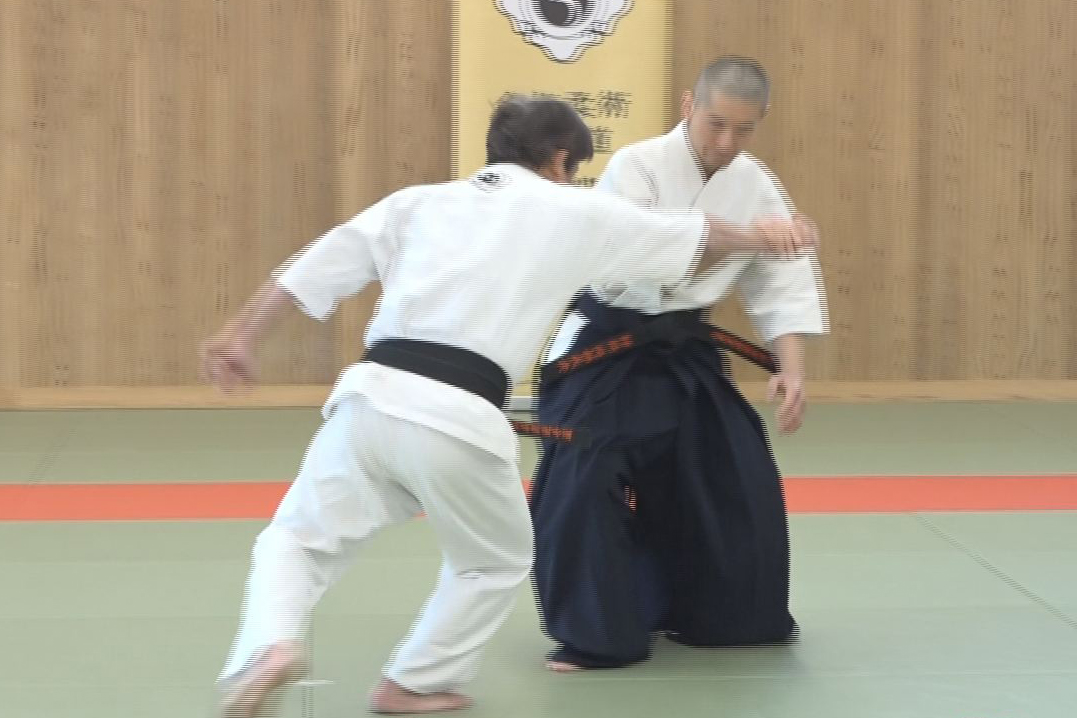
【AIKI Web Course Part 2】Lesson 10 – Application of Force Equilibrium method
-
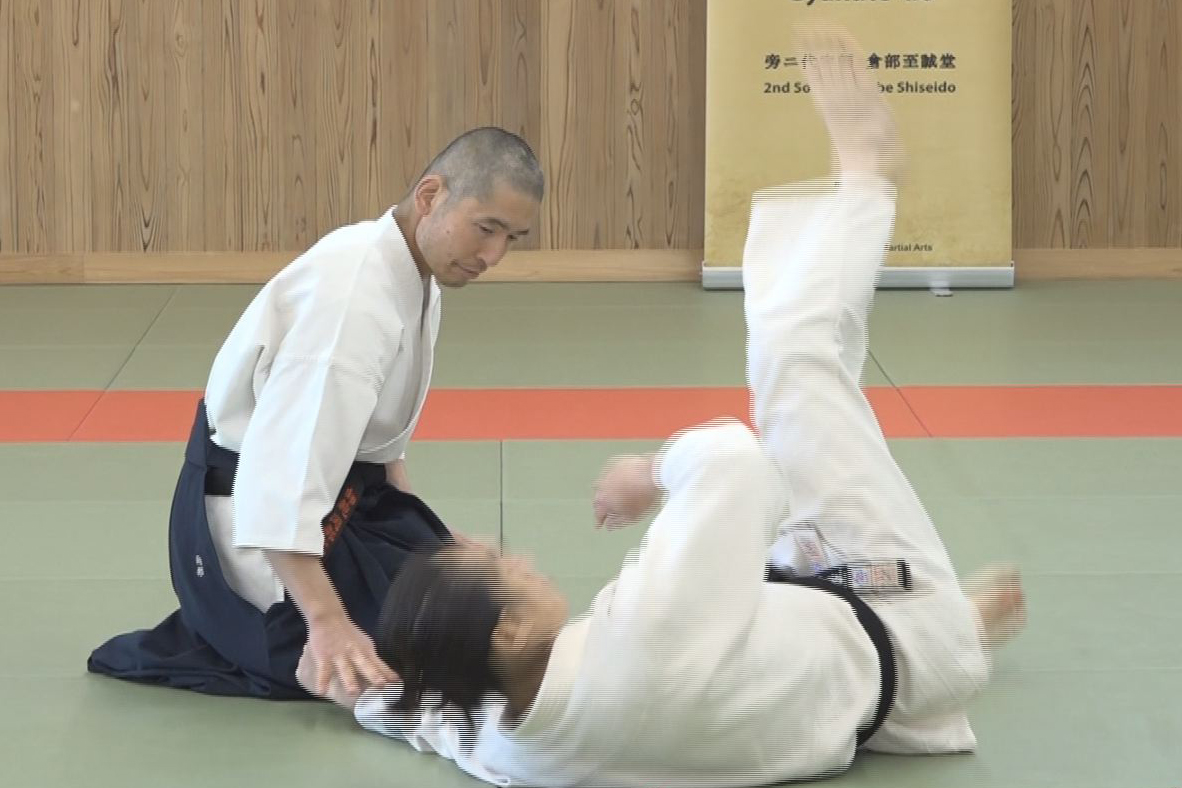
【AIKI Web Course Part 2】Lesson 9 – Force Equilibrium
-
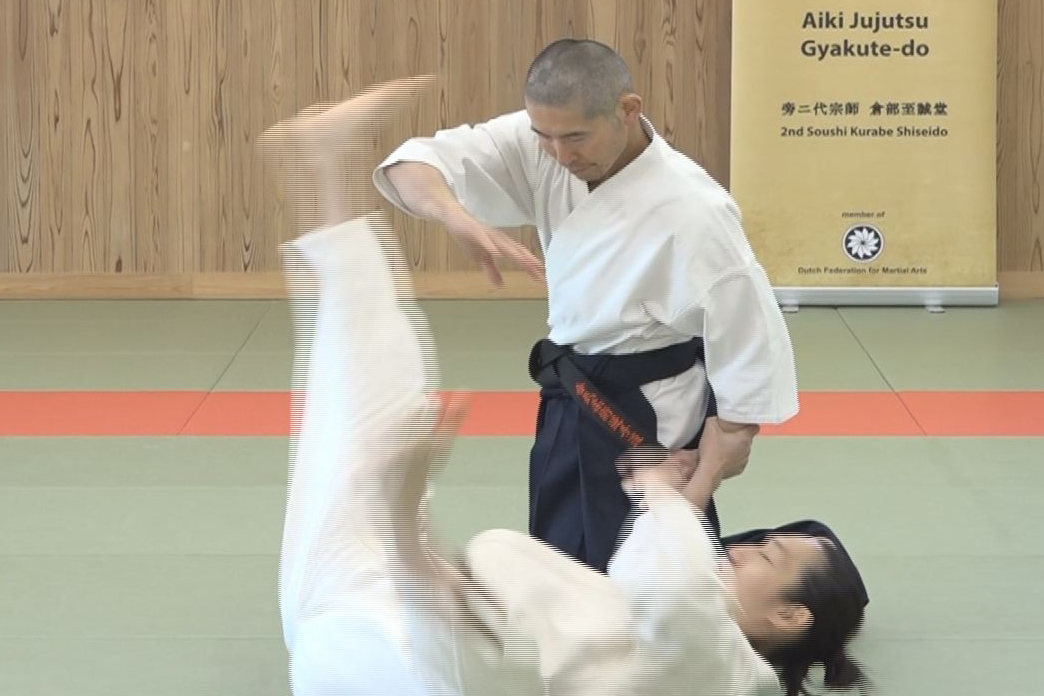
【AIKI Web Course Part 2】Lesson 8 – Application of Targeted Force Transfer
-
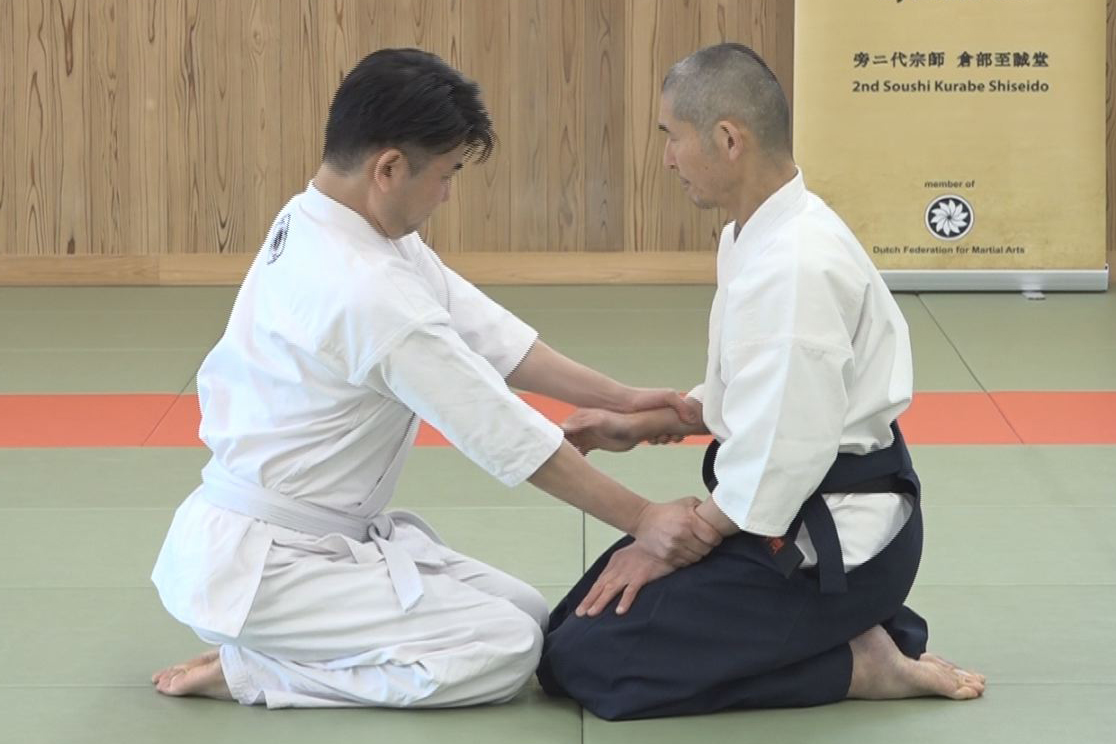
【AIKI Web Course Part 2】Lesson 7 – Targeted Force Transfer
-

【AIKI Web Course Part 2】Lesson 6 – Application of AIKI Connection
-
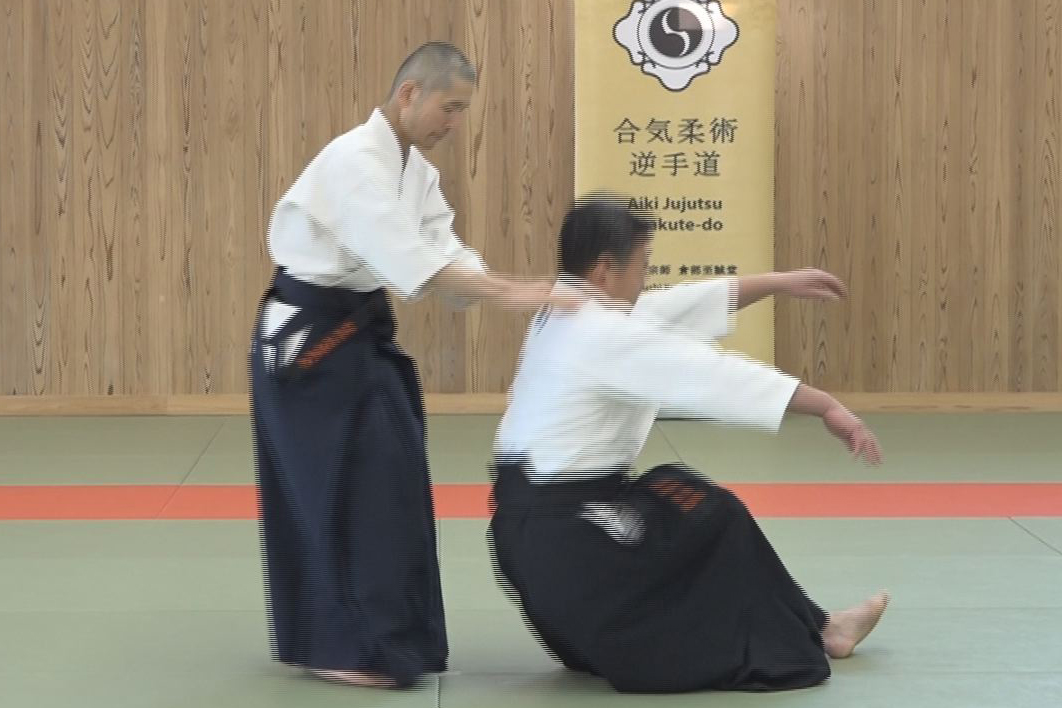
【AIKI Web Course Part 2】Lesson 5 – AIKI Connection
-

【AIKI Web Course Part 2】Lesson 4 – Application of Nondetectable Force Transfer
-
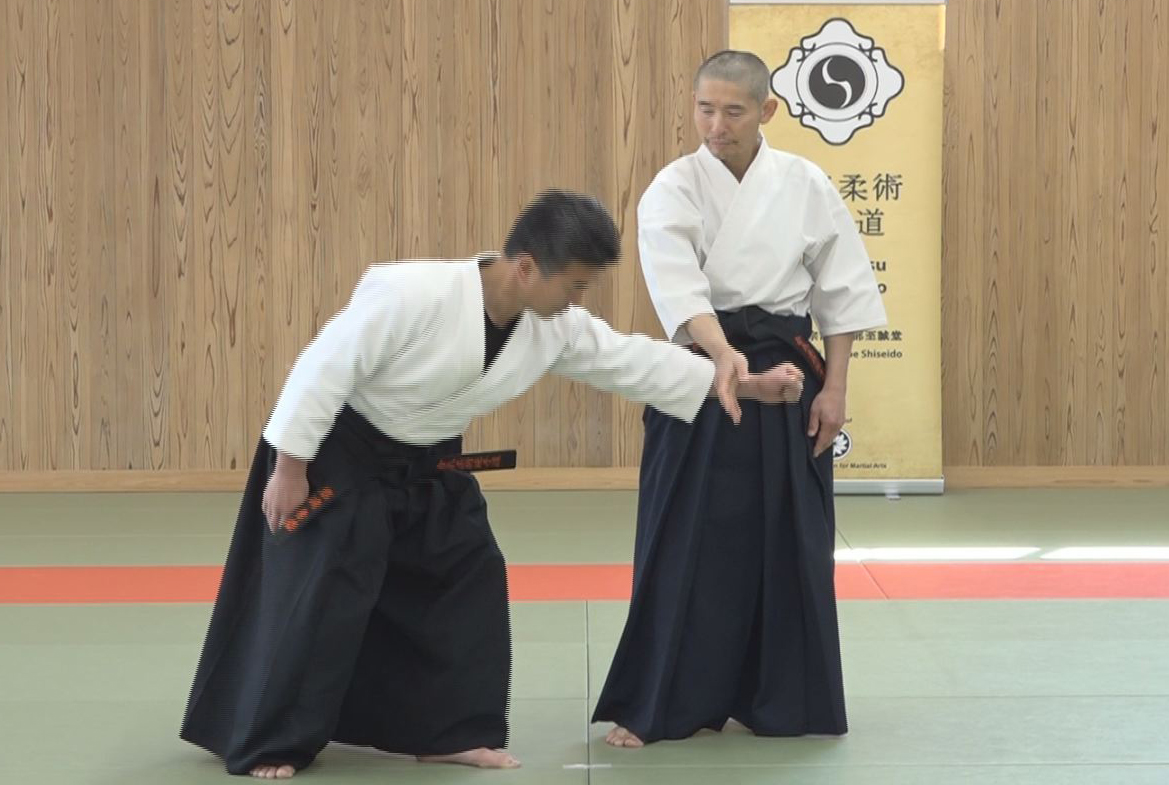
【AIKI Web Course Part 2】Lesson 3 – Explanation of Undetectable Force Transfer
-
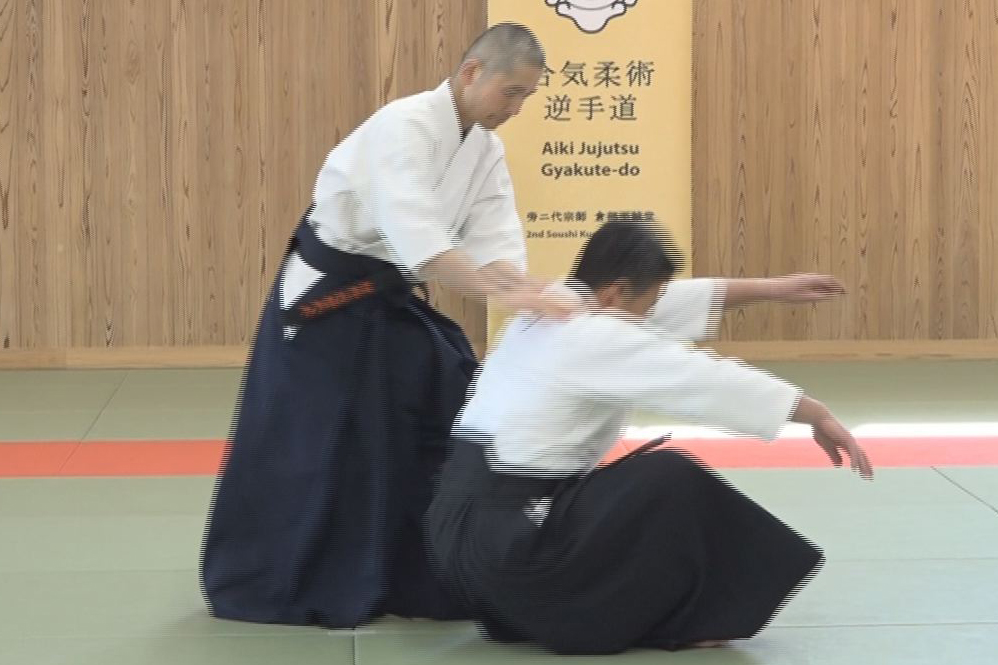
【AIKI Web Course Part 2】Lesson 2 – Application of Waving Method
-

【AIKI Web Course Part 2】Lesson 1 – The Explanation of Waving Method
-
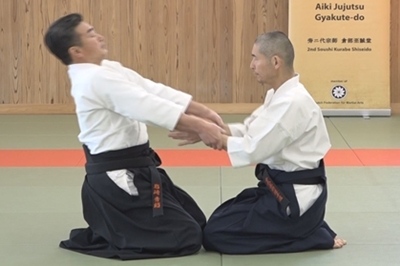
【AIKI Web Course Part 2】Introduction with video



